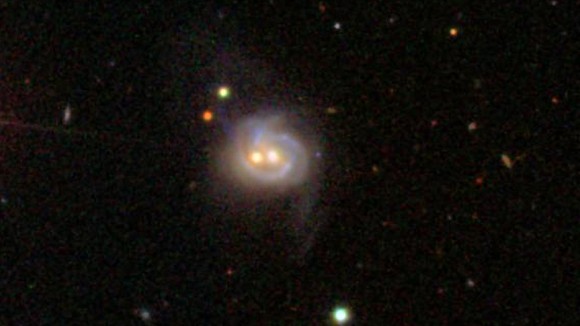Two supermassive black holes

Just as we all settled down and accepted the idea that most (if not all) galaxies have super-massive black holes at their cores, x-ray telescopes in orbit have found a galaxy with two. NGC 3758 (also catalogued as Markarian 739) is 425 million light years away, in the constellation Leo.
We’ve known about one of the black holes in this galaxy for quite a while. It was something of a textbook case, with the black hole actively attracting a large amount of gas and dust and emitting huge amounts of radiation, giving the galaxy what is known as an Active Galactic Nucleus (AGN). But recent observations by the Swift satellite revealed emissions from a second black hole on the opposite side of the galaxy. Follow-up observations by Chandra confirmed that there are indeed two enormous black holes within this galaxy.
How did this happen? NGC 3758 is known to be the resulting merge of a collision between two galaxies. The black holes at the centre of galaxies are usually quiet, having rapidly consumed all nearby material. But when galaxies collide, everything is thrown around, dumping enormous amounts of matter onto a collision course with the black hole. Since both galaxies in the collision had their own black hole, both could become AGN’s, producing what we see today.
